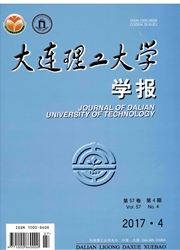

 中文摘要:
中文摘要:
对内部无缺陷的单晶硅纳米级压痕过程进行了分子动力学仿真,从原子空间角度分析了单晶硅纳米级压痕过程的瞬间原子位置、作用力和势能等变化,解释了压痕过程.研究表明:磨粒逐渐向单晶硅片的逼进和压入,使得磨粒下方的硅晶格在磨粒的作用下发生了剪切挤压变形,磨粒作用产生的能量以晶格应变能的形式贮存在单晶硅的晶格中(即硅原子间势能),因此硅原子间势能随着力的增加而不断增加,当超过一定值且不足以形成位错时,硅的原子键就会断裂,形成非晶层,堆积在金刚石磨粒的下方.当磨粒逐渐离开单晶硅片时,非晶层原子进行重构,释放部分能量,从而达到新的平衡状态.
 英文摘要:
英文摘要:
The molecular dynamic method is employed to simulate the indentation process of defect-free monocrystal silicon, the instantaneous distribution of atoms, the grinding force, and the potential energy in atomic scale are analyzed, and the micro-scale mechanism of the indentation process is explained. It is shown that elastic and plastic deformation in the work piece occurs and the energy of the abrasive is turned into the potential energy between silicon atoms with the abrasive's indenting. When the potential energy between silicon atoms reaches a critical value, the bonds of silicon atoms are broken and the amorphous layer is formed and piled under the abrasive. With the leaving of the abrasive, atoms of the amorphous layer under the abrasive are reconstructed and some potential energy is released, then the system comes to a new balance.
 同期刊论文项目
同期刊论文项目
 同项目期刊论文
同项目期刊论文
 期刊信息
期刊信息
